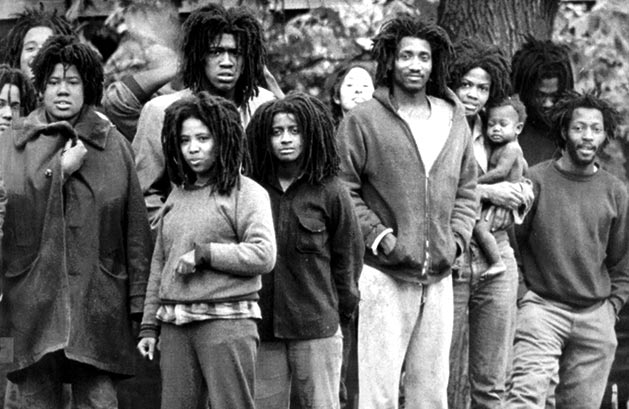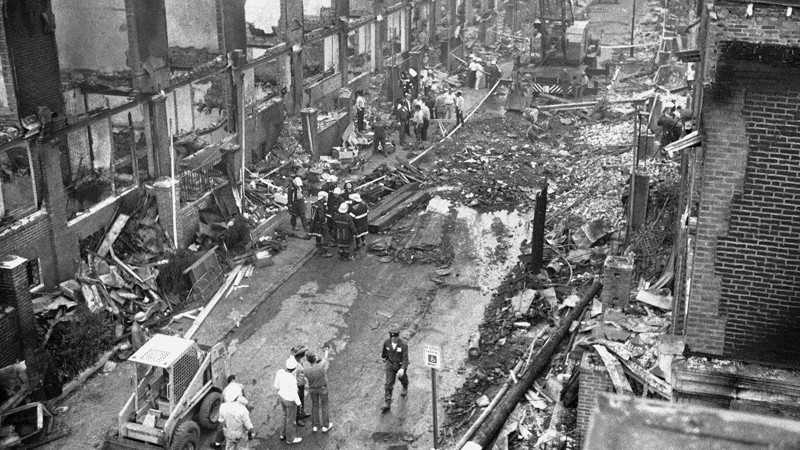On May 13, 1985 — after firing 10,000 rounds of ammunition and spraying hoses of teargas — Philadelphia Police Department Commissioner George Sambor ordered that officers drop a bomb from a state-supplied helicopter onto the home of black radicals. Eleven people, including five children, were killed in the massive fire that resulted. Roughly 60 homes in the primarily black working class neighborhood also went up in flames, a tragic incident that Jason Osder documented in his 2013 film, Let The Fire Burn, screening on the 30th anniversary of the bombing at Oakland’s Omni Commons.
The events leading up to that fateful day in Pennsylvania are complicated. MOVE, the group of black radicals that occupied the row house at 6221 Osage Avenue in West Philadelphia, had a tense relationship with law enforcement, particularly after a police officer was killed during a failed eviction-turned-shootout with police in 1978 (seven other officers, five firefighters, and three MOVE members were injured; nine MOVE members were convicted of the officer’s murder and each sentenced 30 to 100 years in prison).
Yet, before the shootout, the MOVE house was typical of the post-1960s experimental, consciousness-shifting times. Founded by John Africa in 1972 with the intent to simply life, the MOVE house was a commune of black families focused on unplugging from media and advocating for green politics and social justice. What started as a peaceful, anti-establishment revolution slowly turned violent as police used force to settle conflicts and MOVE members started collecting guns to defend themselves.

Of the two members who escaped the 1985 bombing, Ramona Africa is the sole survivor; Michael Ward (aka Birdie Africa), who was just 13 when he escaped the home with second and third degree burns covering his body, died from drowning in 2013. Phil Africa, one of the nine arrested for the officer’s death in 1978, died a “suspicious death” in prison earlier this year. Though Philadelphia eventually rebuilt many of the homes in the neighborhood, they were later boarded up and condemned because of shoddy construction. The incident and its aftermath gave Philly an unfortunate moniker: The City That Bombed Itself.


